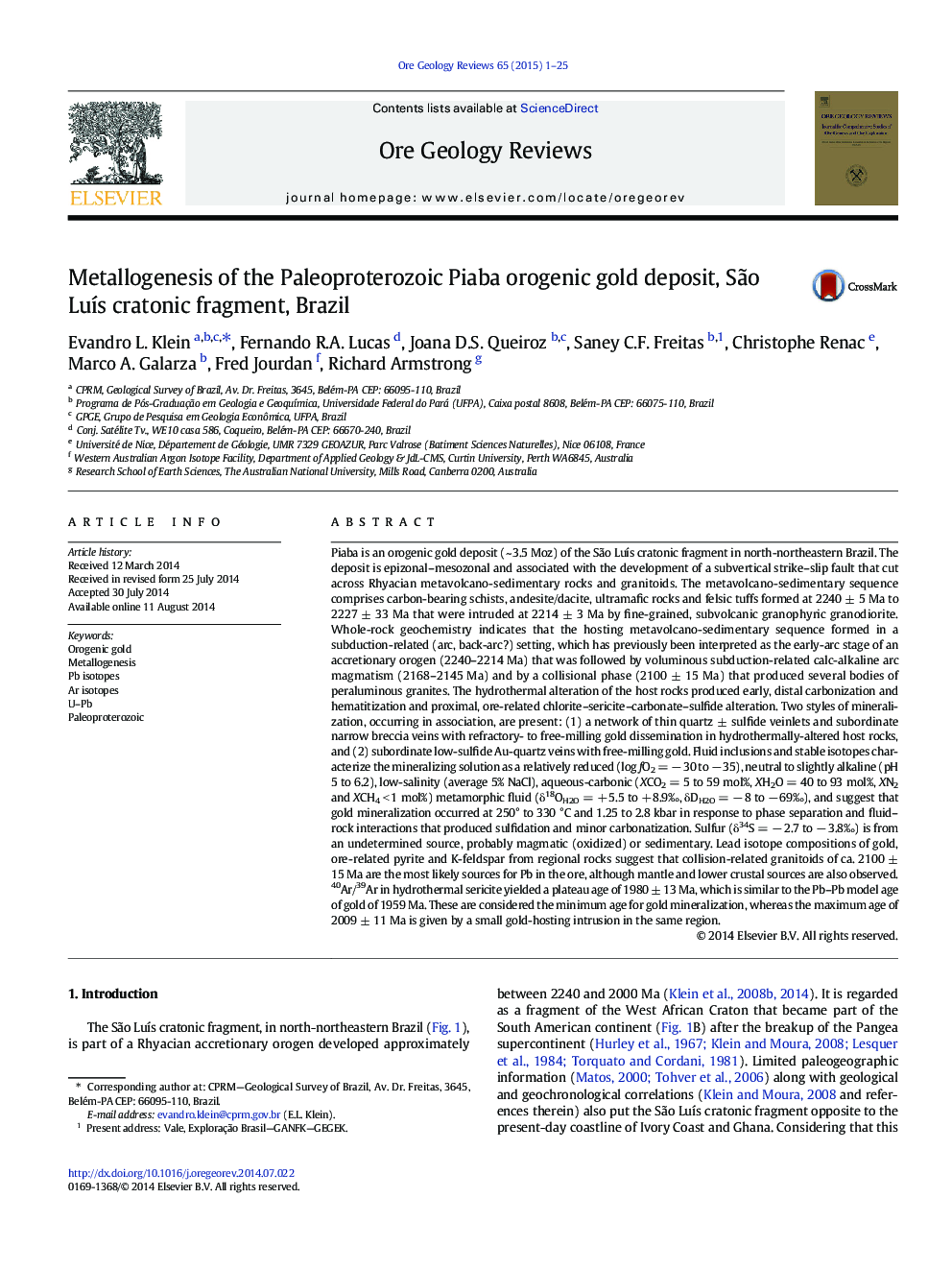| کد مقاله | کد نشریه | سال انتشار | مقاله انگلیسی | نسخه تمام متن |
|---|---|---|---|---|
| 4697245 | 1351868 | 2015 | 25 صفحه PDF | دانلود رایگان |

Piaba is an orogenic gold deposit (~ 3.5 Moz) of the São Luís cratonic fragment in north-northeastern Brazil. The deposit is epizonal–mesozonal and associated with the development of a subvertical strike–slip fault that cut across Rhyacian metavolcano-sedimentary rocks and granitoids. The metavolcano-sedimentary sequence comprises carbon-bearing schists, andesite/dacite, ultramafic rocks and felsic tuffs formed at 2240 ± 5 Ma to 2227 ± 33 Ma that were intruded at 2214 ± 3 Ma by fine-grained, subvolcanic granophyric granodiorite. Whole-rock geochemistry indicates that the hosting metavolcano-sedimentary sequence formed in a subduction-related (arc, back-arc?) setting, which has previously been interpreted as the early-arc stage of an accretionary orogen (2240–2214 Ma) that was followed by voluminous subduction-related calc-alkaline arc magmatism (2168–2145 Ma) and by a collisional phase (2100 ± 15 Ma) that produced several bodies of peraluminous granites. The hydrothermal alteration of the host rocks produced early, distal carbonization and hematitization and proximal, ore-related chlorite–sericite–carbonate–sulfide alteration. Two styles of mineralization, occurring in association, are present: (1) a network of thin quartz ± sulfide veinlets and subordinate narrow breccia veins with refractory- to free-milling gold dissemination in hydrothermally-altered host rocks, and (2) subordinate low-sulfide Au-quartz veins with free-milling gold. Fluid inclusions and stable isotopes characterize the mineralizing solution as a relatively reduced (log fO2 = − 30 to − 35), neutral to slightly alkaline (pH 5 to 6.2), low-salinity (average 5% NaCl), aqueous-carbonic (XCO2 = 5 to 59 mol%, XH2O = 40 to 93 mol%, XN2 and XCH4 < 1 mol%) metamorphic fluid (δ18OH2O = + 5.5 to + 8.9‰, δDH2O = − 8 to − 69‰), and suggest that gold mineralization occurred at 250° to 330 °C and 1.25 to 2.8 kbar in response to phase separation and fluid–rock interactions that produced sulfidation and minor carbonatization. Sulfur (δ34S = − 2.7 to − 3.8‰) is from an undetermined source, probably magmatic (oxidized) or sedimentary. Lead isotope compositions of gold, ore-related pyrite and K-feldspar from regional rocks suggest that collision-related granitoids of ca. 2100 ± 15 Ma are the most likely sources for Pb in the ore, although mantle and lower crustal sources are also observed. 40Ar/39Ar in hydrothermal sericite yielded a plateau age of 1980 ± 13 Ma, which is similar to the Pb–Pb model age of gold of 1959 Ma. These are considered the minimum age for gold mineralization, whereas the maximum age of 2009 ± 11 Ma is given by a small gold-hosting intrusion in the same region.
Figure optionsDownload as PowerPoint slide
Journal: Ore Geology Reviews - Volume 65, Part 1, March 2015, Pages 1–25